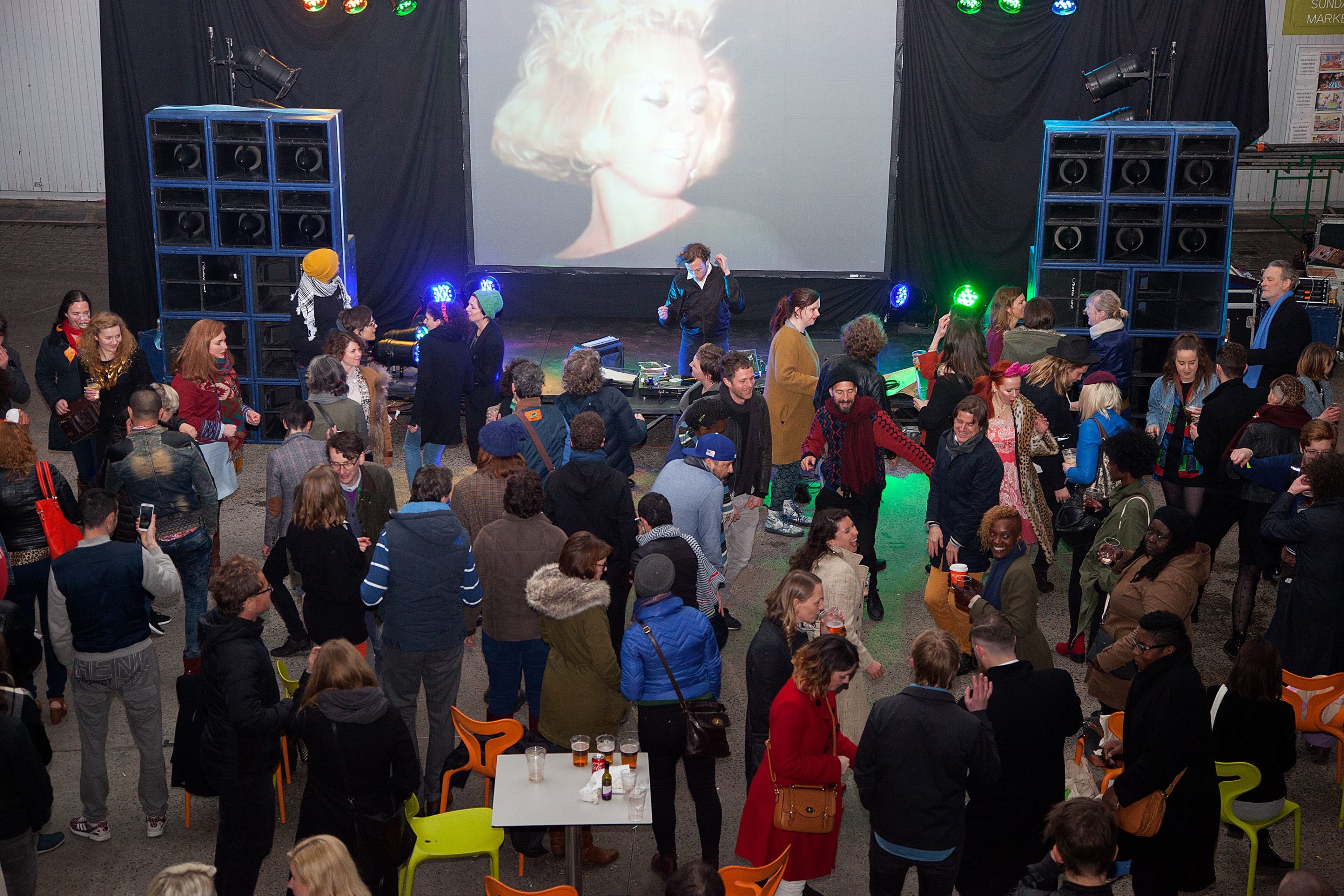Music for Chameleons (Barbarians)
Still (the) Barbarians is the title of the 2016 edition of Ireland’s biennial of contemporary art curated by Koyo Kouoh, open to the public from 16 April to 17 July. Koyo Kouoh’s curatorial project, addresses artistic, architectural, poetic, and critical positions that interpret how colonialism, which continues to shape our present condition, has had an effect on the psyche, landscape, language, and imagination. Invasive disruptions of social, cultural, religious, and political orders have long been subject matter for artists, writers, filmmakers, architects, scientists, and activists, Still (the) Barbarians: A Symposium will explore how artists respond to postcolonial legacies, while also looking more specifically at the lasting impact that colonialism has had on the Irish language.
Music for Chameleons is an ongoing project conceived around the conviction that the dance floor can be a zone of experimentation, self-invention, transformation, and communion. An inclusive, interactive happening concerned fundamentally with the politics of pleasure, Music for Chameleons emphasizes music’s capacity to restore an individual’s arcane, perhaps even ‘tribal’ instincts.
These (usually nocturnal) events are a celebration of the redemptive transgressive potential of dance music as a sensibility and social-aesthetic practice – are informed by a 1979 article by Richard Dyer, published in Gay Left titled ‘In Defence of Disco’. According to Dyer, it wasn’t just the sexual or ethnic diversity of disco’s artists and audiences that was important, Dyer believed disco reflected the mechanized and material realities of marginalized and minoritized life under capitalism. Moreover, its sound – produced from electronic components such as synthesizers, drum machines, and sequencers – was a liberating agent.
Inasmuch as nightclub dance spaces can serve as rehearsal spaces for modes of being-together that are better, more just, more caring, more fulfilling, or simply less harmful, they are also spaces of utopianism.
This is not to claim all nightclubs are fully realized utopias – far from it – but rather that their dance floors are utopian in spirit: they provide concrete sites for the collective envisioning of a different kind of ‘good life’
– Richard Dyer, ‘In Defence of Disco,’ 1979
For Dyer, the sonic qualities of disco facilitated emotional release; its rhythm and aural textures were imbued with erotic and emotional extremes that permitted escape from the routines of everyday life. The intention behind the happening is not merely to refer to the aesthetics of subversion, transcendence, and reappropriation but to create a communal atmosphere in which these aesthetics become a temporary reality.
































































































































































































































